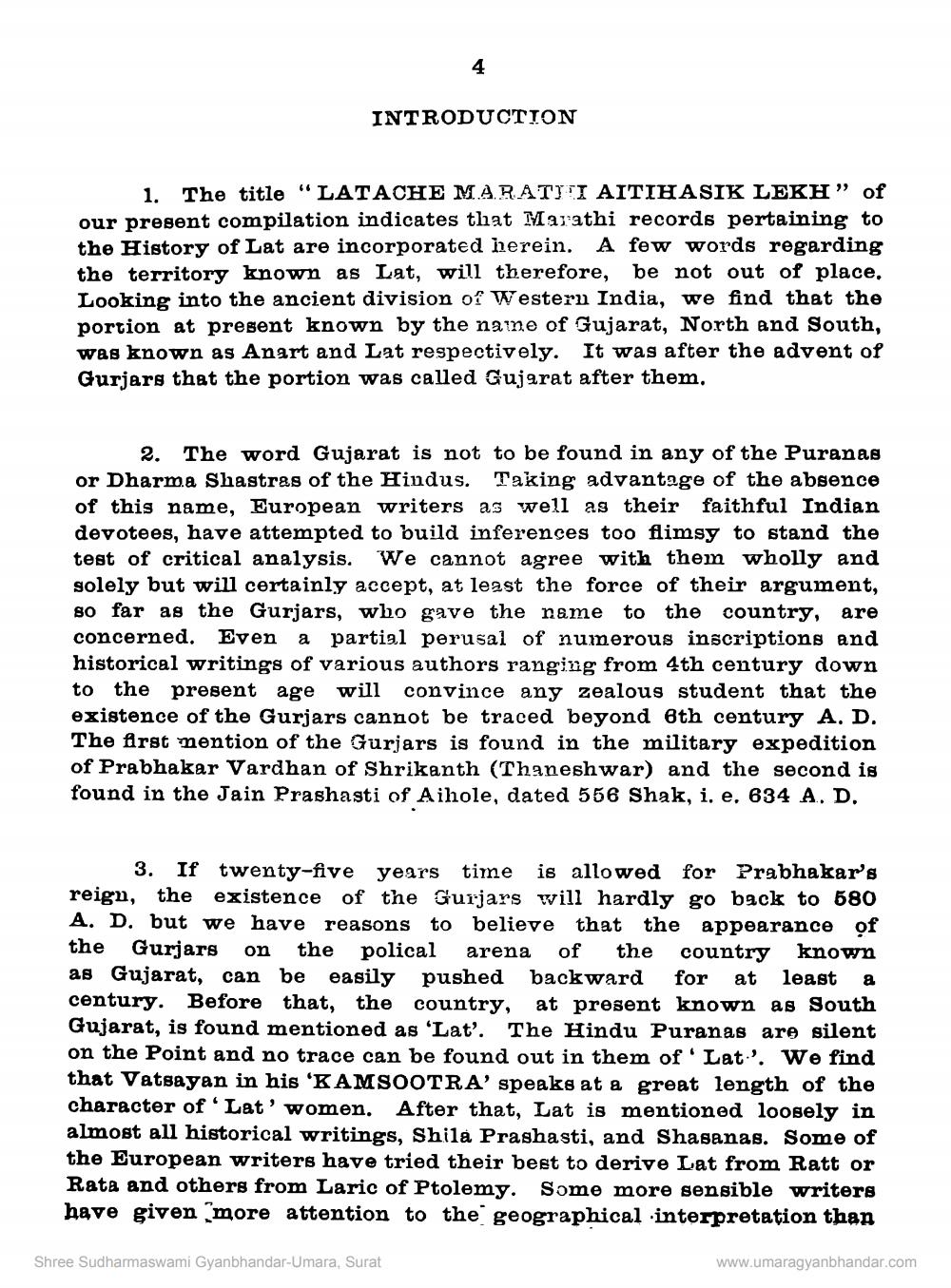________________
INTRODUCTION
1. The title "LATACHE MARATITI AITIHASIK LEKH” of our present compilation indicates that Marathi records pertaining to the History of Lat are incorporated herein. A few words regarding the territory known as Lat, will therefore, be not out of place, Looking into the ancient division of Western India, we find that the portion at present known by the naine of Gujarat, North and South, was known as Anart and Lat respectively. It was after the advent of Gurjars that the portion was called Gujarat after them.
2. The word Gujarat is not to be found in any of the Puranas or Dharma Shastres of the Hindus. Taking advantage of the absence of this name, European writers as well as their faithful Indian devotees, have attempted to build inferences too flimsy to stand the test of critical analysis. We cannot agree with them wholly and solely but will certainly accept, at least the force of their argument, so far as the Gurjars, who gave the name to the country, are concerned. Even a partial perusal of numerous inscriptions and historical writings of various authors ranging from 4th century down to the present age will convince any zealous student that the existence of the Gurjars cannot be traced beyond 6th century A. D. The first mention of the Gurjars is found in the military expedition of Prabhakar Vardhan of Shrikanth (Thaneshwar) and the second is found in the Jain Prashasti of Aihole, dated 556 Shak, i. e, 634 A. D.
3. If twenty-five years time is allowed for Prabhakar's reign, the existence of the Gurjars will hardly go back to 580 A. D. but we have reasons to believe that the appearance of the Gurjars on the polical arena of the country known as Gujarat, can be easily pushed backward for at least a century. Before that, the country, at present known as South Gujarat, is found mentioned as 'Lat'. The Hindu Puranas are silent on the Point and no trace can be found out in them of Lat. We find that Vatsayan in his 'KAMSOOTRA' speaks at a great length of the character of 'Lat' women. After that, Lat is mentioned loosely in almost all historical writings, Shila Prashasti, and Shasanas. Some of the European writers have tried their best to derive Lat from Ratt or Rata and others from Laric of Ptolemy. Some more sensible writers have given more attention to the geographical interpretation than
Shree Sudharmaswami Gyanbhandar-Umara, Surat
www.umaragyanbhandar.com




